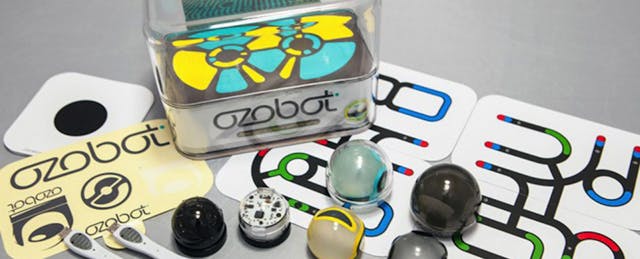“Inclusion” is defined as the practice of educating all children in the same classroom, including children with physical, mental, and developmental disabilities. IDEA (or the Individuals with Disabilities Education Act) mandates that special education students receive a free and appropriate education from the ages of 3 to 21, depending upon the state interpretation of the policy. In 1975, IDEA mandated that special education students be placed in their least restrictive environment. But that’s difficult to do with limited resources and budgets.
That is, until digital technology swept into schools.
Disabilities like blindness and serious health impairments affect less than 1% of the population in most schools. Because of the rarity of these needs, these students benefit from attending a specialized school like The A. Harry Moore Laboratory School of New Jersey City University. Thanks to an innovative program designed by the New Jersey Department of Education, the students of A. Harry Moore have recently been able to share some 21st century digital inclusion experiences with their non-disabled peers--and in turn, together learn what true inclusion looks like in the classroom.
The Plan
The A. Harry Moore Laboratory School (AHM) is a historic school that has provided quality programs for special education students in Hudson, Essex, and Bergen Counties starting in 1931, over four decades prior to the IDEA legislation. AHM students have low-incidence disabilities, which include low vision, deafness, significant developmental delays, serious physical impairments and autism.
AHM was selected this past spring to be a part of a program called innovateNJ through the New Jersey Department of Education, based upon outstanding use of technology in their unique school environment. Director of School Innovation Takecia Saylor made the strategic decision to pair up AHM and Toms River, the largest suburban district in the State of NJ. The goal: collaborate, and learn from one another.
Their digital collaboration has been a unique celebration of the strengths and talents of students in both educational settings, as well as a creative example of providing an inclusive learning experience with technology. Toms River and AHM administration and faculty completed site visits in early June, and during this time, they planned a series of collaborative events with one another based upon the strengths and talents of each group. In all discussions, several big themes arose: professional development, special education, and robots.
The Partnership: Bonding Over Google Hangout
Over the summer, AHM students have been involved in their extended school year programs that’s included. Meanwhile, the Toms River School District having been engaging in week-long robotics programs. What better way to lead a partnership then to combine and share their learning experiences through 21st century collaboration?
On the first day of both summer programs, the students and staff from each school participated in a Google Hangout: the AHM students utilized the video conference to showcase their Jackson Pollock style paintings with Sphero the Robot, some iPads, and a large canvas of paint. The Toms River students then took the lead and introduced their Lego Mindstorm Robots to the AHM students.

Later on in the extended summer program, the art teacher, Janice Schiavo, introduced Ozobots to the AHM students. Ozobot is a tiny robot that teaches kids deductive reasoning and how to code, and it is the latest STEAM project at AHM. Both groups of students were highly engaged witnessing the creative play taking place in their partner school. Both sets of students benefitted from the public speaking experience of having to demonstrate robotics technology and communicate what they had learned about technology to a more global audience.
But that wasn’t all--both sets of students extended and expanded the scope of their summer learning experience beyond the four walls of the classroom, and beyond the brick-and-mortar school building, by engaging with each other and learning about diverse populations.

The Partnership: Learning About Inclusion
One of the most emotional experiences involved some special choreography. A unique challenge in the Toms River Robot Camp was that they had to learn how to program the Lego Mindstorm Robots to perform a variety of tasks. After the students were introduced to AHM, they learned that many of these students move with the assistance of wheelchairs, and that some students who are nonverbal communicate by moving their eyes to the left or to the right.
As Toms River students virtually shared their programming experiences from their summer camp, they revealed that they kept the students in their sister school in mind when designing their code. The Toms River students used the Lego Mindstorm robots to choreograph a dance to be performed by fully mobile students, students in wheelchairs, and students who communicate via eye movement.
Going Forward
This experience illustrates all that is right about designing creative inclusion experiences via digital interaction. This was not a case of two groups of kids from different schools awkwardly staring at each other through the computer; rather this experience celebrated the strengths and differences of two unique school populations.
On the last day of the summer program, the Toms River students programmed the Lego Mindstorm Robots to dance the Sid Shuffle from Ice Age, and we all danced. Our dance was powerful, and showcased that no matter what disability a student may have, when you put together the right educators, technology, and innovative spirit, there is no end to what a child with an IEP, or Individualized Education Plan, is able to do.
In my opinion, IEP should stand for “I expect progress”. And through the power of partnerships, we can expect progress for all students--regardless of their disabilities.


